Discover the versatility, benefits and wonderful tastes of lesser known ingredients from Superfoodio, offering a perfect alternative to the more championed produce…
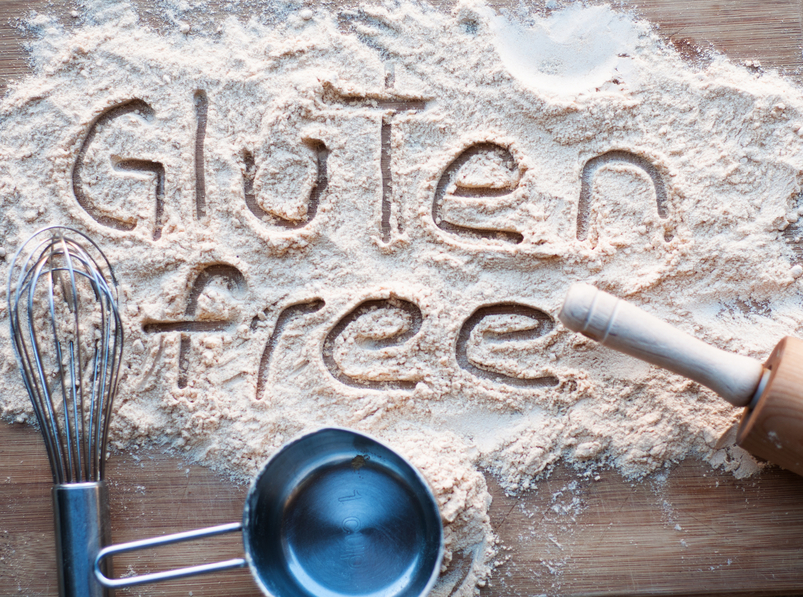
TIGER NUT FLOUR
Despite the name, tiger nuts are actually small starchy tubers. These root vegetables are grown in a field and harvested in pretty much the same way as a potato. The tiger nut is the root of the ‘chufa’ (sedge) plant and thus also known as ‘chufa’, ‘nut grass’ or ‘yellow nutsedge’.
Making up 80% of the diet of our ancestors from 2 million years ago, it is now known that the tiger nut formed an important nutritional role in the evolution of our ancestors from pre-human to human. They have also been found to be incredibly valuable in ancient Egypt, where ancient art depicts the careful sorting of tiger nuts. Tiger nuts, therefore, could be named as the world’s first superfood!
The nutritional benefits are vast. They are one of the highest food sources of resistant starch – a type of fibre and pre-biotic which feeds the good bacteria in the digestive tract. They are also found to be high in iron, potassium, magnesium and vitamins C and E.
Tiger nuts in their ground form create a flour which is a great substitute for regular flours and ideal for those looking for a grain-free alternative. With its slightly sweet, nutty and earthy flavour, this flour makes a great option for baking.
BUCKWHEAT FLAKES
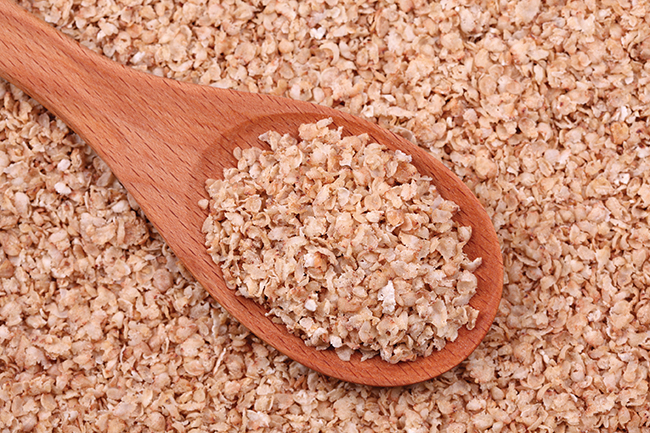
Despite the name, buckwheat doesn’t come from a wheat grain cereal, but from a naturally gluten-free fruit seed. The seeds derive from a honey-producing flower first cultivated in Southeast Asia, but which is now grown all over the world due to its versatility and vast health benefits.
The uses for buckwheat seeds are plentiful – they can be ground into flour, or roasted, or perhaps soaked as an alternative to rice or porridge. When milled in the traditional way and rolled until flat, they make fantastic flakes.
Buckwheat, however consumed, is a valuable addition to anyone’s diet. A nutritional powerhouse, it contains antioxidant-rich vitamins and minerals, amino acids, protein, fibre and flavonoids that work alongside vitamin C to aid the prevention of disease.
Including this powerful seed in your diet is said to help lower blood pressure and cholesterol, balance blood-sugar levels, promote a healthy heart, digestive system and brain, as well as providing a natural boost of energy.
As flakes, they’re perfect as a breakfast cereal. Added to muesli they give a wonderfully nutty taste. Or make your own granola and add to your morning fruit or yoghurt bowl. Homemade brownies, flapjacks and biscuits are all tastier – and healthier – with buckwheat flakes added to them. For a savoury dish, try them as a crispy coating instead of breadcrumbs.
AMARANTH FLOUR
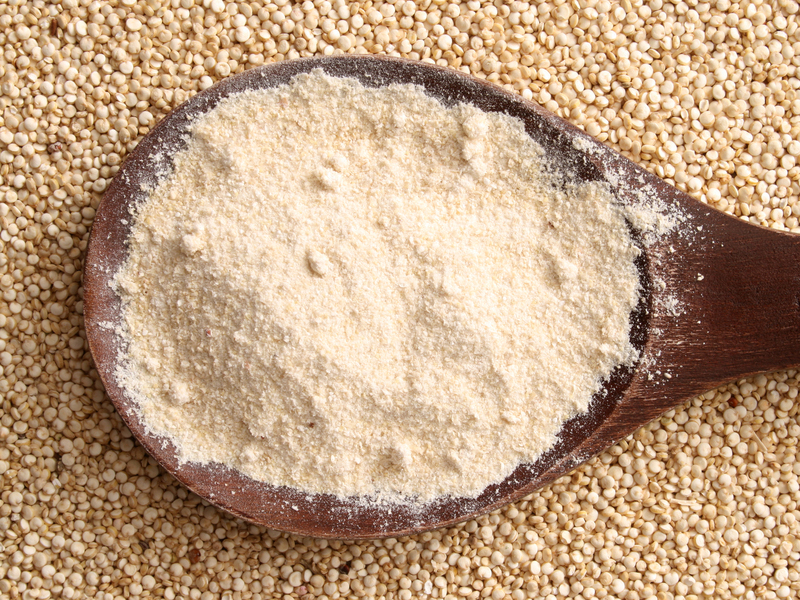
Amaranth flour, derived from the seeds of the ancient amaranth plant, originates from the Americas, but is now grown across parts of Africa, India and China too. The grain in its purest form can be popped similarly to popcorn, or ground into a fine powder and used
as flour.
Amaranth has grown in popularity, being gluten-free and incredibly high in protein and fibre. It also contains high levels of magnesium, calcium, iron and the amino acid lysine, all of which carry great health benefits and earn the grain its reputation of being a ‘nutritional powerhouse’.
It offers a sustained source of energy and can look after your heart, immunity and digestive system.
When combined with other gluten-free flours, amaranth is great for baking foods that need to rise, such as breads, cakes and cookies.
For non-rising foods such as biscuits, it’s fantastic used alone and provides an abundance of goodness to a sweet or savoury treat. Or use as a thickener for sauces, gravies, soups and stews.
COCONUT FLOUR
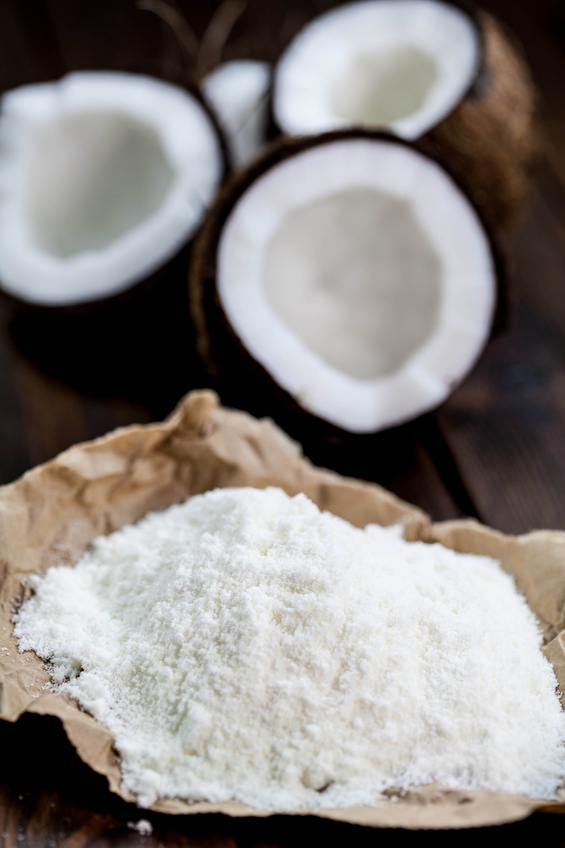
Coconut flour is a delicious, gluten-free and healthy alternative to other flours. This makes it a favourite among followers of the paleo diet, people affected by nut allergies, vegetarians and everyone else in between.
Compared to other flours, coconut flour has a long list of nutritional benefits to offer, including being high in dietary fibre yet relatively low in digestible carbohydrates, a good source of protein and healthy fats, low GI and even helps boost metabolism.
So, how is coconut flour made? Once the outer green husk of a coconut is removed, what remains inside is the rich, inner white lining which is the coconut meat. This coconut meat gets strained to extract the milk and oil, after which it is dehydrated and grated to create a fine textured flour made entirely of coconut.
Coconut flour is light and airy, making it perfect for baking several sweet and savoury dishes.
CHESTNUT FLOUR
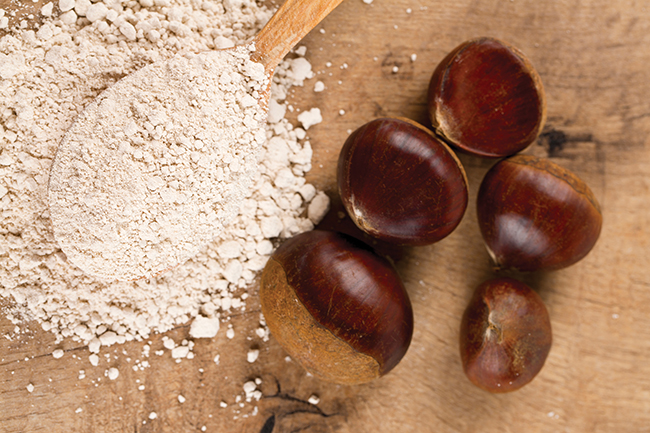
Known as the gluten-free grain that grows on trees, chestnut flour is a versatile alternative to regular flour, with a slightly sweet, nutty flavour. The flour comes from dried or roasted chestnuts, ground into a fine powder, and perfectly complements a paleo diet as well as one that’s gluten-free.
Since chestnuts themselves are lower in fat than regular nuts, chestnut flour is considered a healthier alternative to plain white and almond varieties. Carbohydrate levels are also lower, and it provides a good source of vitamins C, B6 and E, as well as fibre, potassium and a range of essential amino acids. It’s become a favourable option for those preferring natural foods, and is beneficial for a healthy immune and digestive system.
The uses of chestnut flour are vast. In Italy and France it’s a staple ingredient used in pasta dishes, breads, cakes and desserts. Chestnut cake is a firm favourite and typical dessert choice in many Corsican restaurants. The French famously use it in their madeleines and wonderful variety of patisserie delights. Combined in recipes of chocolate, honey or hazelnuts, it’s delicious.
Chestnut flour is also great as a thickener when added to sauces, soups and casseroles, or when baked in pies and pastries.
For more information, please visit www.superfoodio.com.
